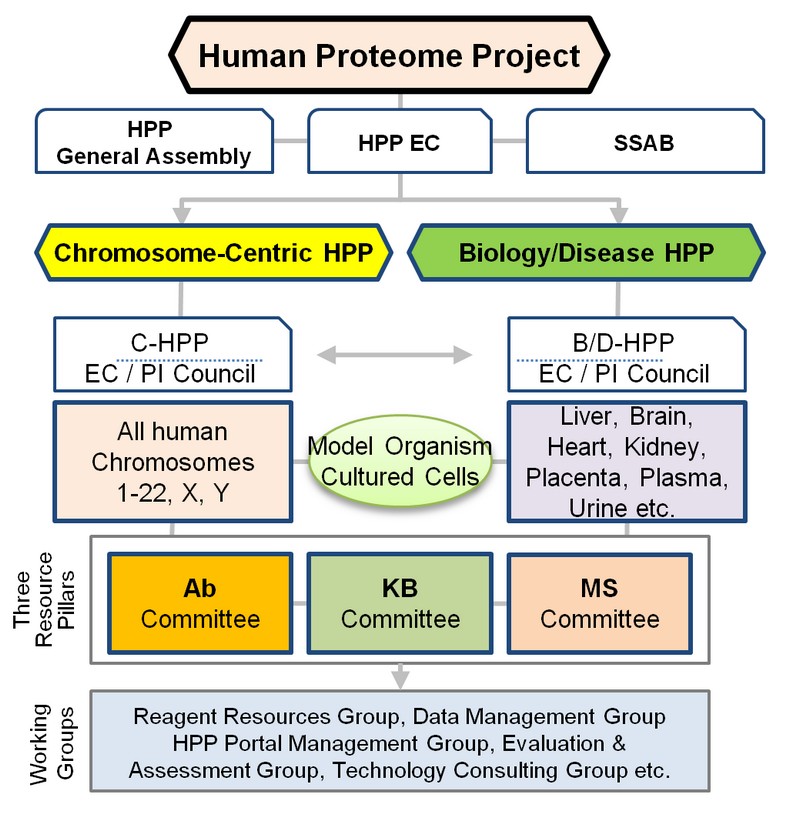Fuchu He (Chr 1), Lydie Lane (Chr 2), Toshihide Nishimura (Chr 3), Yu Ju Chen (Chr 4), Rainer Bischoff (Chr 5), Paul Keown (Chr 6), Mark Baker (Chr 7), Pengyuan Yang (Chr 8), Je-Yoel Cho (Chr 9), Joshua Labaer (Chr 10), Jong Shin Yoo (Chr 11), Visith Thongboonkerd (Chr 12), Young-Ki Paik (Chr 13), Jérôme Garin (Chr 14), Gilberto B. Domont (Chr 15), Juan Pablo Albar (Chr 16), William S. Hancock (Chr 17), Alexander Archakov (Chr 18), György Marko-Varga (Chr 19), Siqi Liu (Chr 20), Daniel Figeys* (Chr 21), Charles Lee and Akhileshi Pandey (Chr 22), Tadashi Yamamoto (Chr X), Ghasem Hosseini Salekdeh (Chr Y), Andrea Urbani (Mitochondria) (*proposed)

